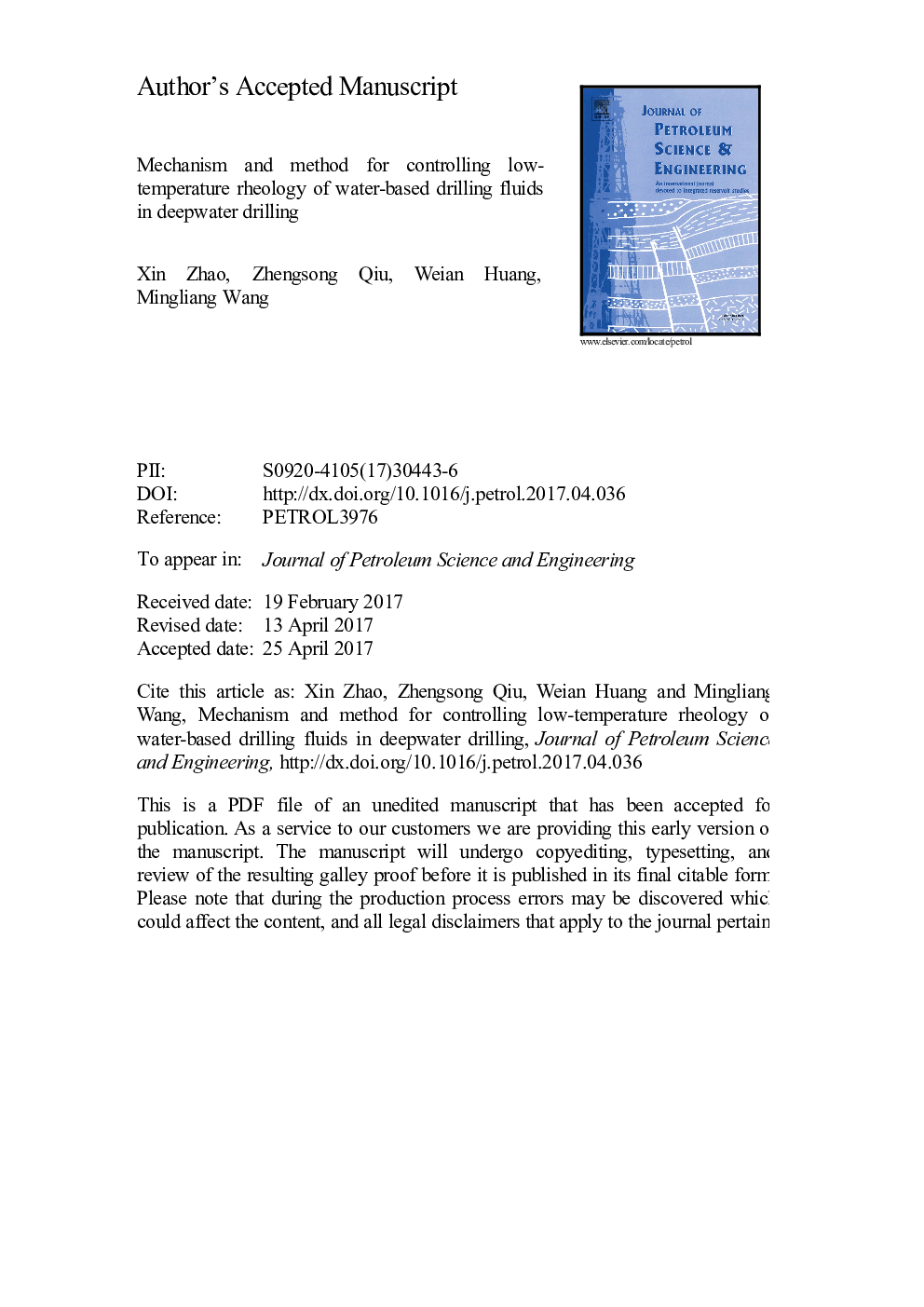| کد مقاله | کد نشریه | سال انتشار | مقاله انگلیسی | نسخه تمام متن |
|---|---|---|---|---|
| 5484223 | 1522787 | 2017 | 50 صفحه PDF | دانلود رایگان |
عنوان انگلیسی مقاله ISI
Mechanism and method for controlling low-temperature rheology of water-based drilling fluids in deepwater drilling
ترجمه فارسی عنوان
مکانیسم و روش برای کنترل شناسی کم دما از مایعات حفاری مبتنی بر آب در حفاری عمیق آب
دانلود مقاله + سفارش ترجمه
دانلود مقاله ISI انگلیسی
رایگان برای ایرانیان
کلمات کلیدی
مایع حفاری عمیق، روش کنترل رئوئل، دمای پایین، ضخیم شدن کوپلیمر حرارتی حساس
موضوعات مرتبط
مهندسی و علوم پایه
علوم زمین و سیارات
زمین شناسی اقتصادی
چکیده انگلیسی
In deepwater oil and gas drilling, water-based drilling fluids (WBDFs) apparently thicken at a low temperature (usually 4 °C), causing lost circulation, high flow resistance, and leakage of drilling fluid from the shaking screen. In this study, the rheological properties of aqueous suspensions containing different components were tested from 4 to 75 °C. Furthermore, the influencing mechanism of a low temperature on the rheology of WBDFs was comprehensively analyzed, and a basic method for controlling low-temperature rheology was proposed. The results showed that all the aqueous suspensions exhibited thickening at a low temperature. The thickening of WBDF at a low temperature could be attributed to the intrinsic feature of water, edge-to-edge and edge-to-face attraction bond structures formed by clay particles, and remarkable polymer molecular entanglement. The development of a rheology modifier that increases the rheology at a high temperature while does not work at a low temperature, optimization of the solid components including bentonites and weight materials, rational design of the molecular structure of polymers, and selection of the additives that do not cause remarkable thickening can help to control the low-temperature rheology of WBDF. Based on this method, a thermosensitive copolymer rheological modifier and a low-molecular-weight coating agent were developed, and two high performance WBDFs were optimized. Their rheological properties were found to be more stable than those of the three typical WBDFs over a wide temperature range from 4 to 75 °C. Therefore, the rheology control method proposed in this study can help to design a WBDF with good low-temperature rheology.
ناشر
Database: Elsevier - ScienceDirect (ساینس دایرکت)
Journal: Journal of Petroleum Science and Engineering - Volume 154, June 2017, Pages 405-416
Journal: Journal of Petroleum Science and Engineering - Volume 154, June 2017, Pages 405-416
نویسندگان
Xin Zhao, Zhengsong Qiu, Weian Huang, Mingliang Wang,
